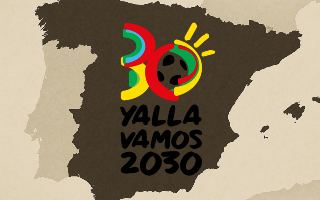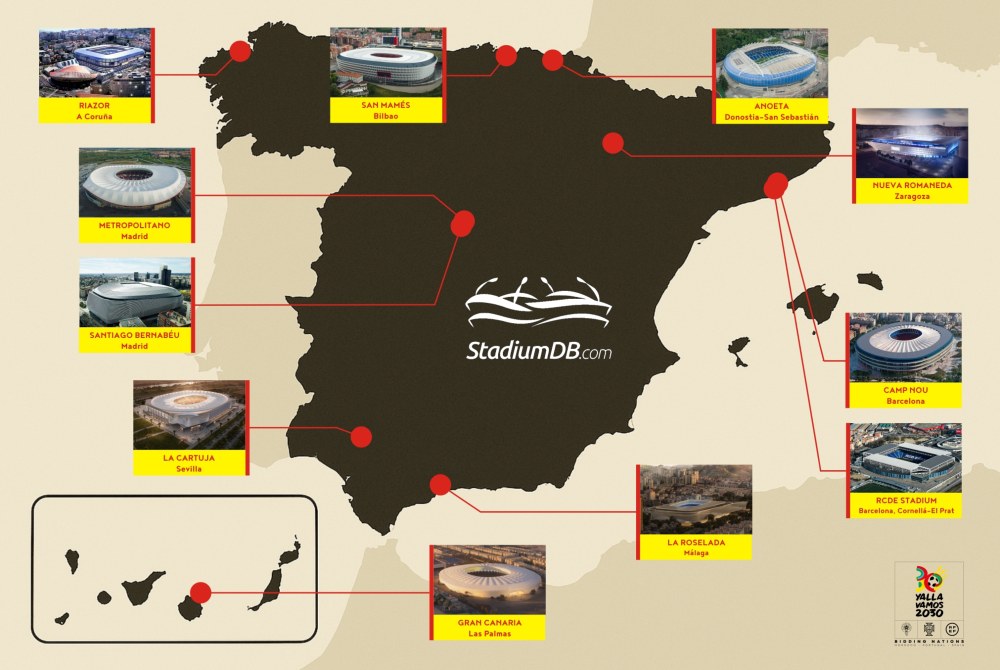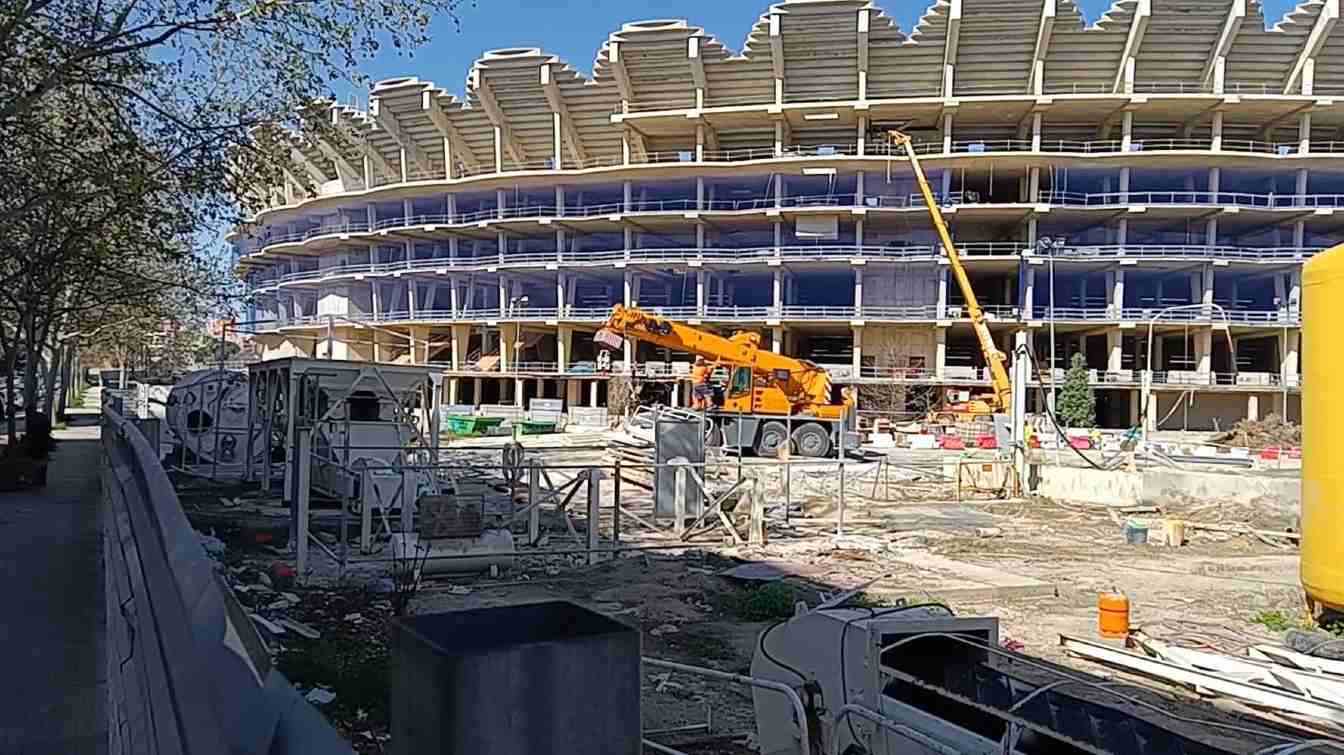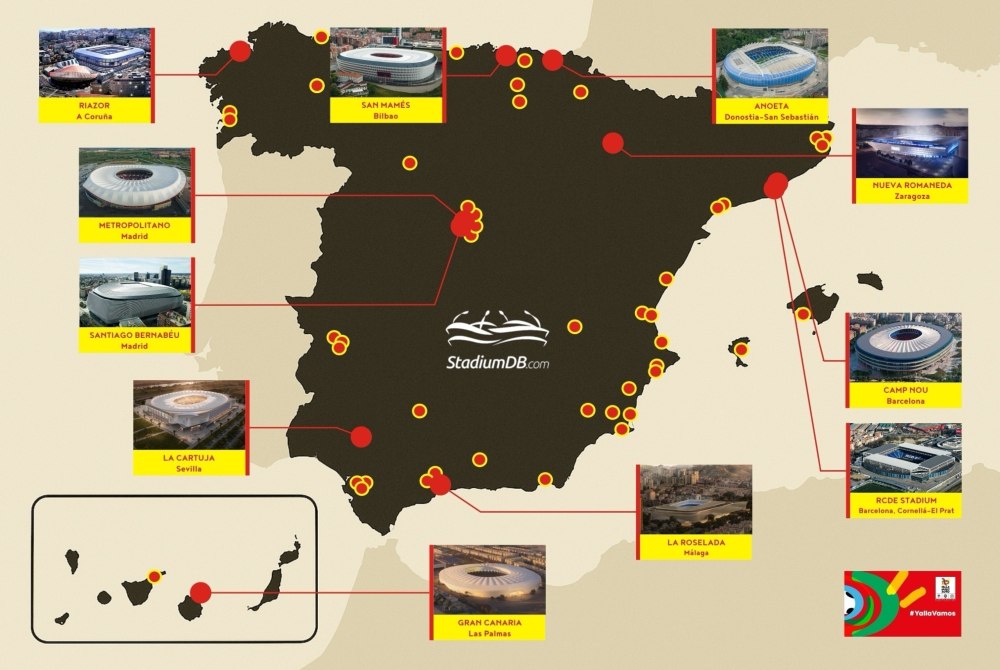World Cup 2030: Spanish bid, shaken by insecurity, is in FIFA's hands
source: StadiumDB.com; author: Miguel Ciołczyk Garcia
 Shaken by the stadium evaluation affair, the Spanish bid for the 2030 World Cup faces even more challenges in the future. The pressure from Valencia, the problems of Riazor and La Rosaleda and the rising costs cause uncertainty and forecast a fight till the end, which will come with FIFA's decisions.
Shaken by the stadium evaluation affair, the Spanish bid for the 2030 World Cup faces even more challenges in the future. The pressure from Valencia, the problems of Riazor and La Rosaleda and the rising costs cause uncertainty and forecast a fight till the end, which will come with FIFA's decisions.
Advertisement
The federation chooses to turn the page
We are going to appoint a new person responsible for Spain. We will soon have a meeting with FIFA to assess all the work that has been done and what needs to be done from now on,
announced Spanish federation (RFEF) president Rafael Louzán last Thursday in Marca.
Despite it is still unclear what the real reason for Vigo's exclusion from the World Cup was, and the fact the publication of El Mundo point to a possible influence of Louzán himself, the federation has decided to turn the page on the affair baptized by Spanish media as Hostgate.
The RFEF takes as valid the explanations of María Tato and considers that there was no irregularity in the evaluation process, thus it is not going to change the headquarters.
 For the time being, the 11 host cities announced in December by FIFA will not change.
For the time being, the 11 host cities announced in December by FIFA will not change.
All in FIFA's hands
But FIFA has the authority to change them. Gianni Infantino's body can follow RFEF's recommendations, but it is not obliged to do so. It can therefore choose to replace one of the venues with another city or reduce the number of stadiums. In fact, there have long been circulating rumours that FIFA is looking to reduce the number of Spanish venues to nine. The international federation would be looking for a way to go down from the 20 venues (11 in Spain, 6 in Morocco, 3 in Portugal) to even 17.
It is also FIFA that will decide whether Valencia or Vigo will enter the World Cup. Valencia has it much easier thanks to the strong support of the RFEF, which positions Nou Mestalla as the main candidate to replace the Metropolitano if Atletico Madrid really resigns.
Meanwhile, the olive city is still fighting to be on the list, but after the RFEF's refusal to change the venues or repeat the evaluation it will not be easy. Their hope is that one of the chosen cities will have serious problems, and that FIFA will choose to replace them with Vigo rather than simply reduce the number of stadiums. However, the Tribuna stand at Balaídos would have to be rebuilt, and the more time passes, the harder it will be to make it for the tournament.
 © Amunt Mestalla | Work on the Nou Mestalla is progressing faster than expected, and Valencia insists on hosting the World Cup.
© Amunt Mestalla | Work on the Nou Mestalla is progressing faster than expected, and Valencia insists on hosting the World Cup.
A multi-speed bid
Of the eleven Spanish venues, five hardly need any changes. These are Santiago Bernabéu, Metropolitano, RCDE Stadium, San Mamés and Anoeta. Three others - Camp Nou, La Cartuja and La Romareda - are already under construction and should have no problems arriving on time. The new Estadio Gran Canaria project is ready, and its construction, due to start this summer, will take two years, so Las Palmas should not be in trouble either.
But there are two cases of concern: Riazor and La Rosaleda. Although the Galician city promises to have the Riazor project in place by summer and to have already secured private investment, the local government sees the negotiations at a standstill
and the rising costs could threaten the plans. Meanwhile, there is little progress on the Costa del Sol either. It is already known that Málaga will have to move for the duration of the refurbishment of La Rosaleda, but both the final design and the costs remain unknown.
540 million for venues and training facilities... and they fall short
We foresee an investment of 540 million euros to fit out the eleven stadiums and all the base camps,
said María Tato when she was still working for the RFEF. But the figures come out higher.
The work on La Rosaleda will cost around 230 million euros, that of Riazor between 90 and 110, the new Estadio de Gran Canaria 105, the new Romareda 140, and the current work on La Cartuja, 15 million. In total, around 600 million euros.
And that is without taking into account the second phase of work on La Cartuja, the reconstruction of the Camp Nou or the refurbishment of the stadiums that are already completed, nor the adaptation of the 45 training grounds. It also remains to be seen what impact the tariffs announced by the United States will have. The total cost could be much higher.
 In addition to preparing the 11 stadiums, Spain will have to adapt the 45 training centres.
In addition to preparing the 11 stadiums, Spain will have to adapt the 45 training centres.
Advertisement
 StadiumDB
StadiumDB